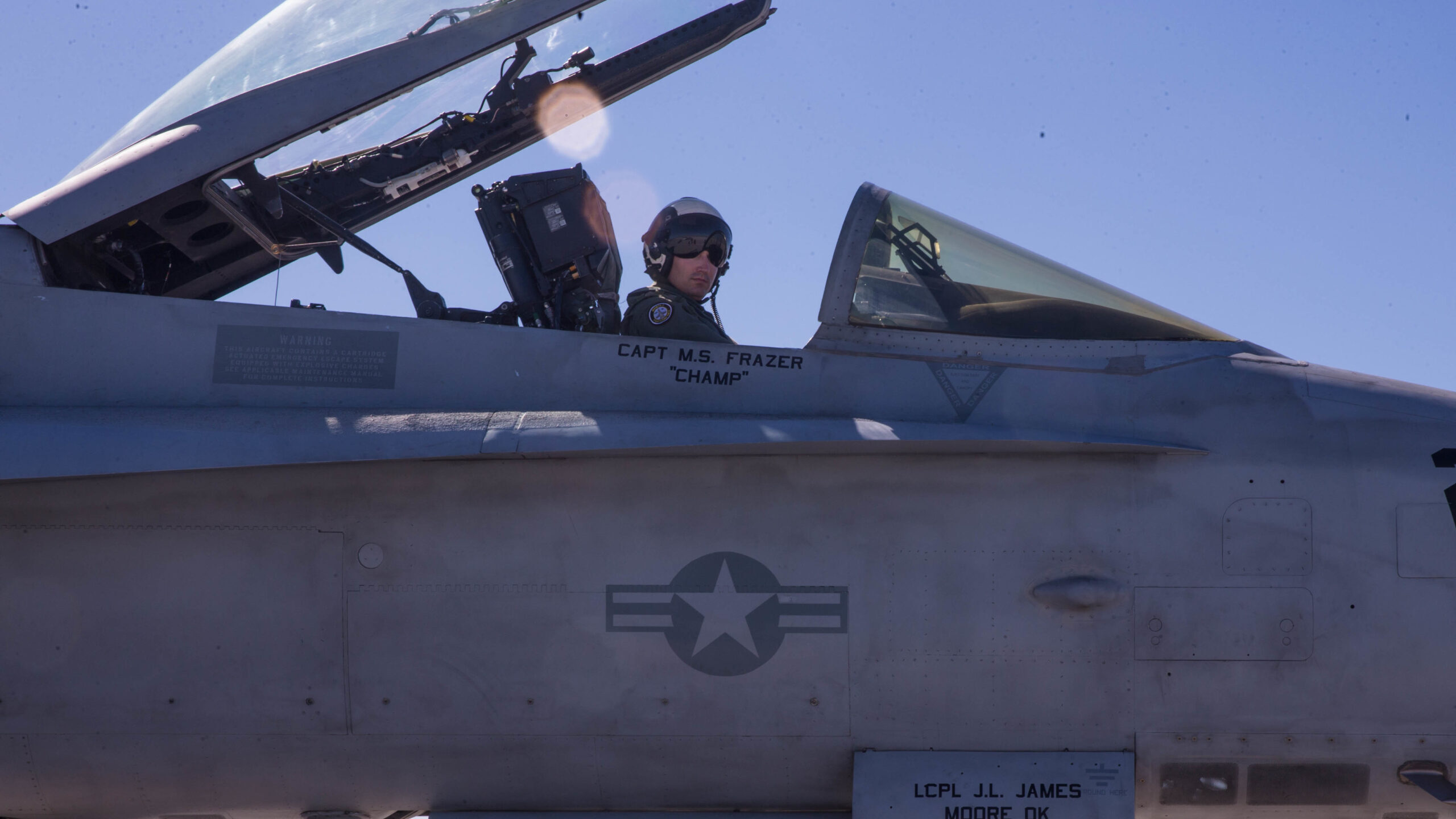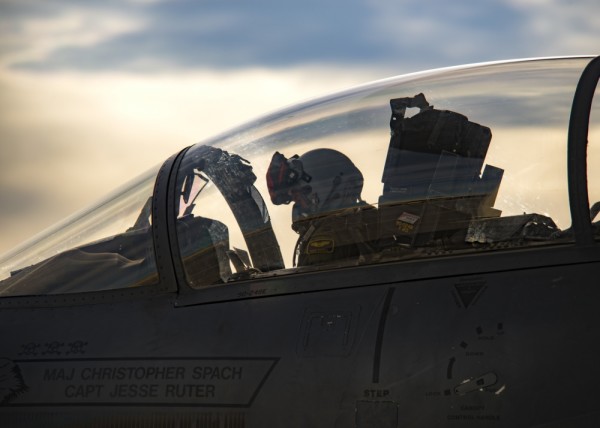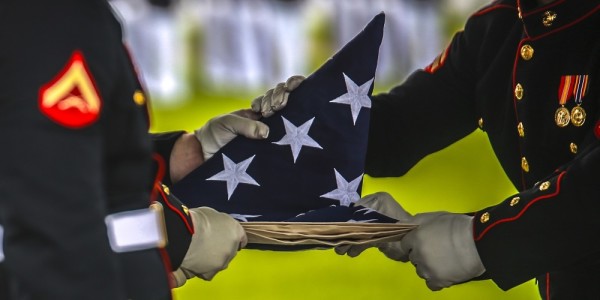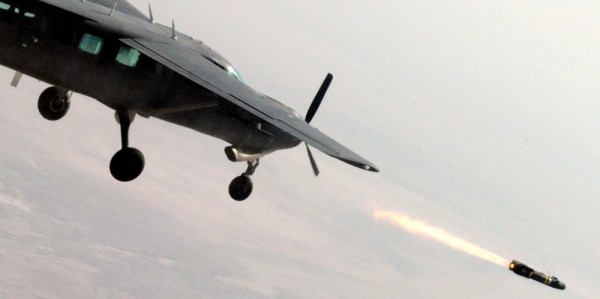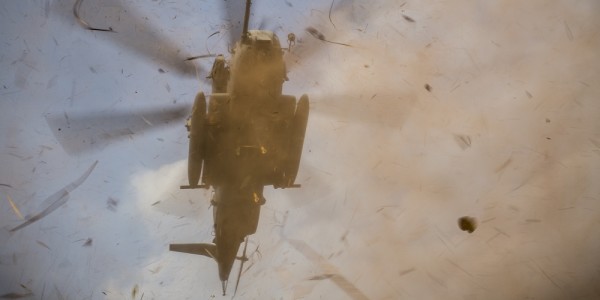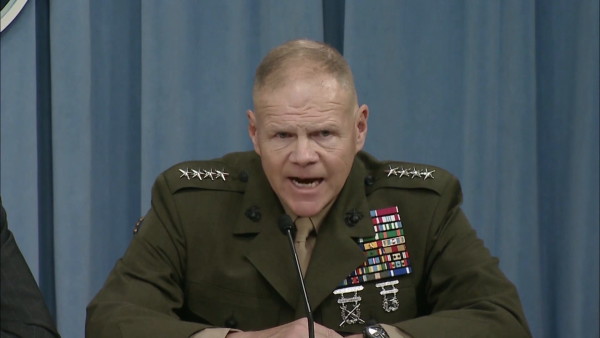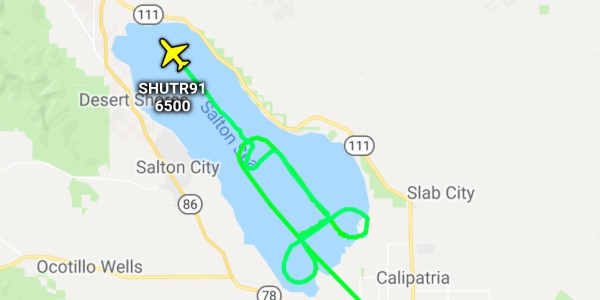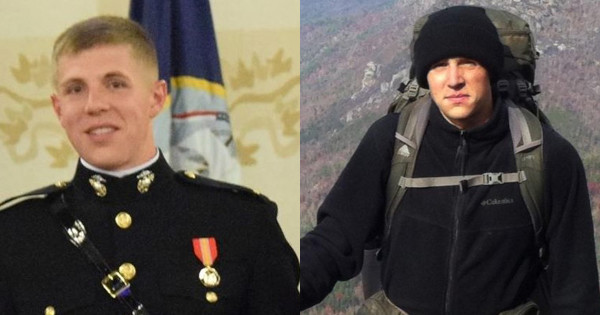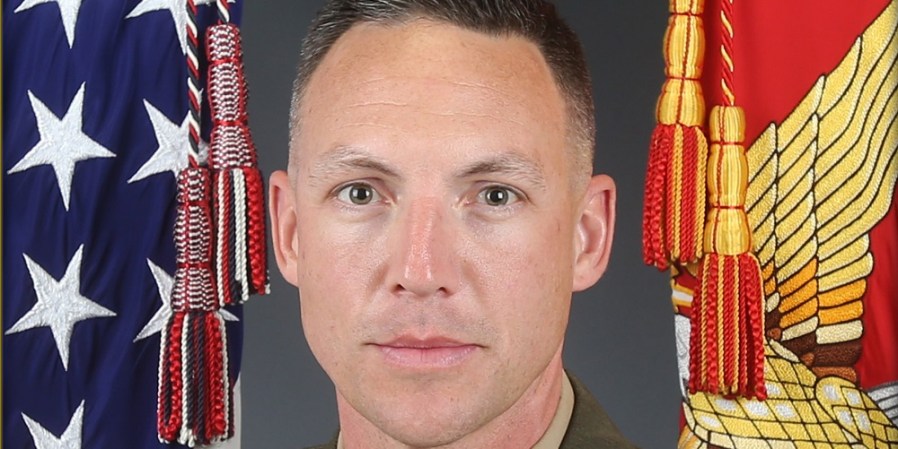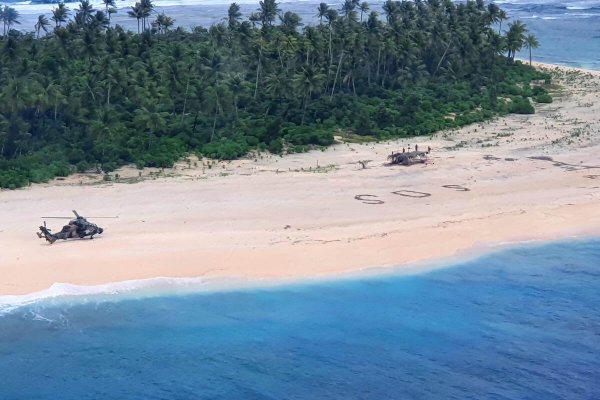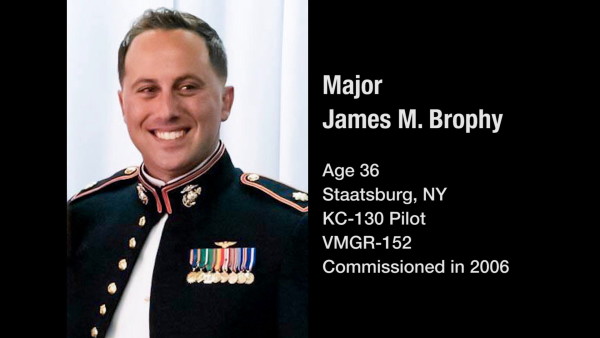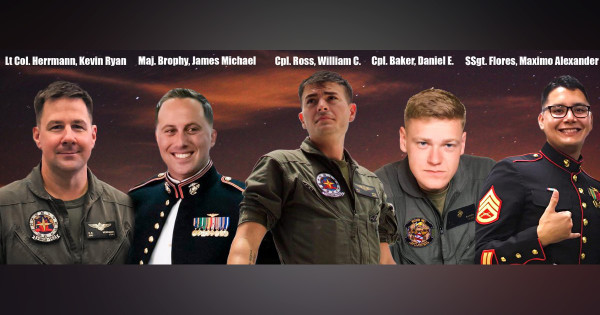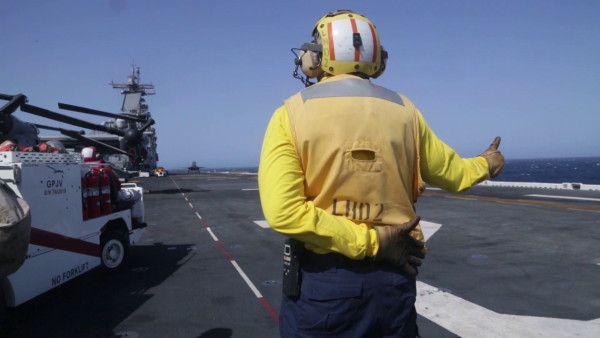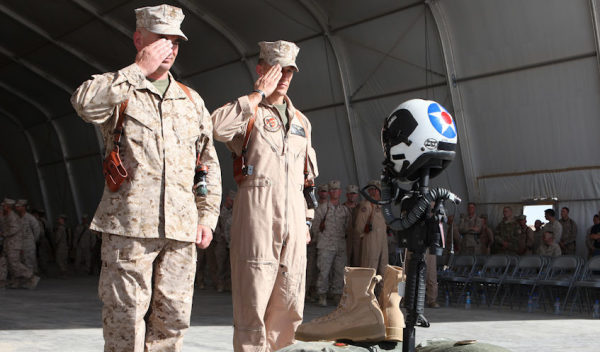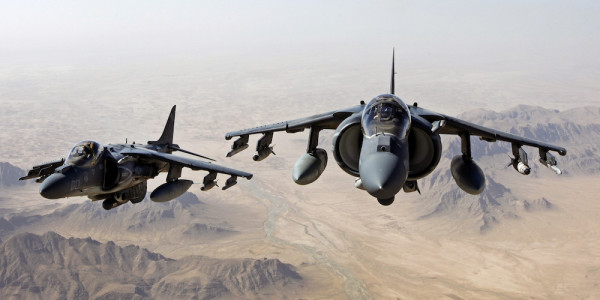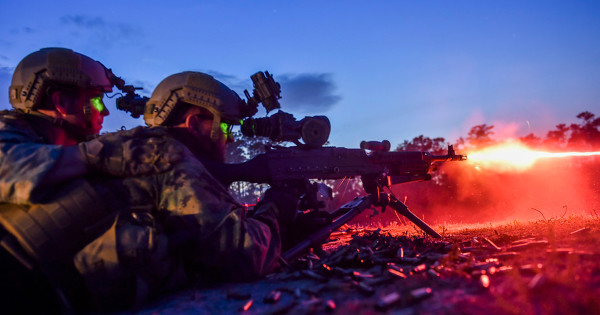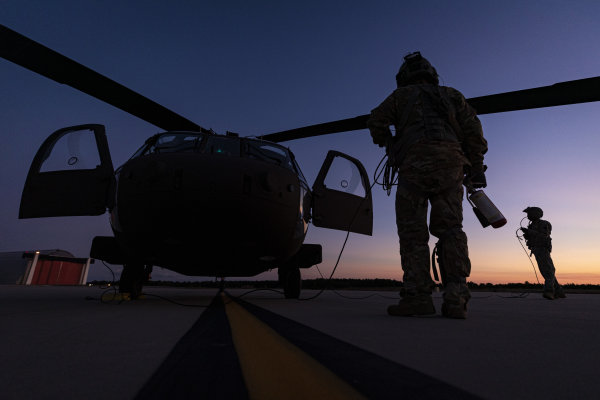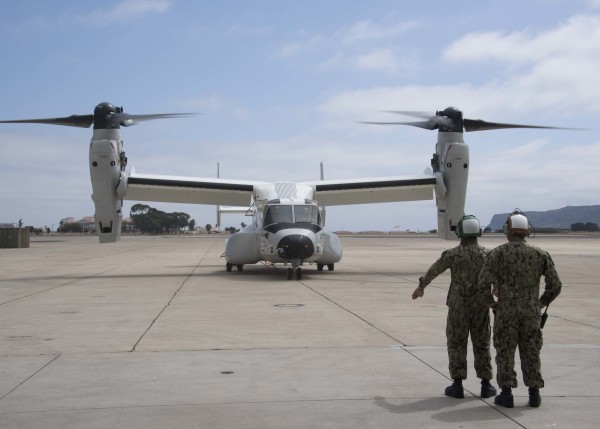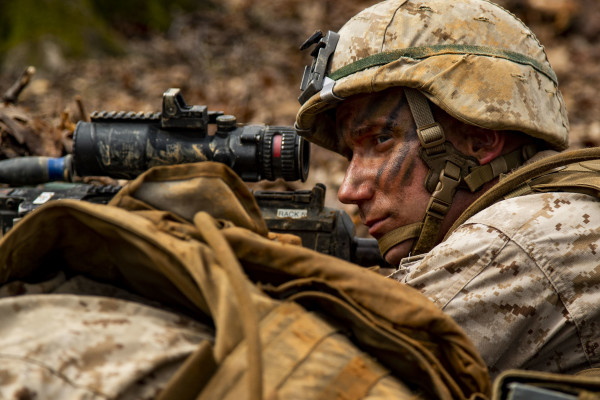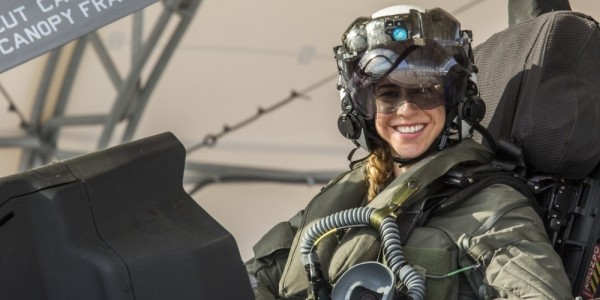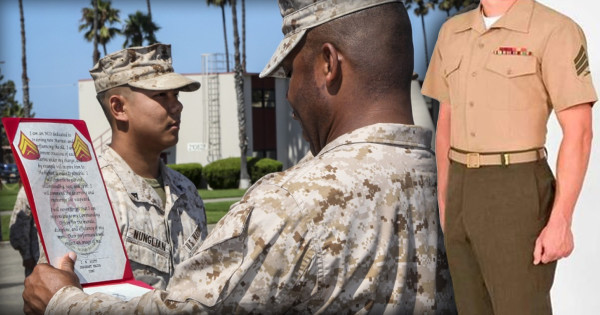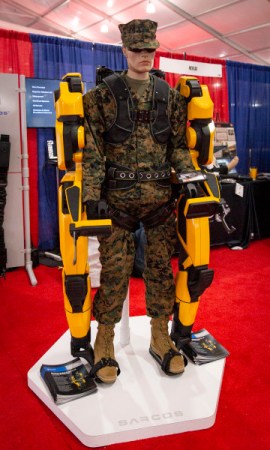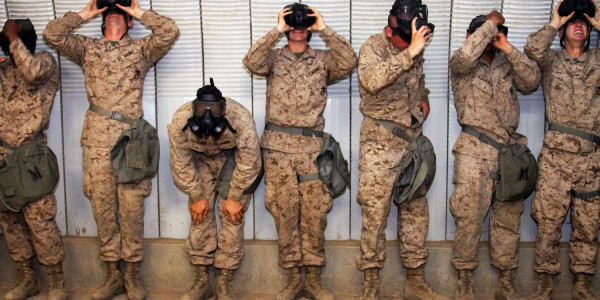During the early months of 2020, the Marine Corps was fighting a losing battle of its aviators resigning in droves to join commercial airlines. Only a few months prior, in late 2019, I had written an article attempting to detail how the Corps was lobbing ineffective bonuses, restricting pilots’ career choices, and failing to address systemic issues that push aviators to look for career options beyond the military. While I expected not to make many friends with the article, I had hoped identifying problems and proposing solutions would fuel some sort of positive change for Marine Corps pilot management. As I continued to plan my own departure from active duty service in 2020, I held out hope it might make a difference to those remaining in the aviation community after I was gone.
It was around this time that the Corps’ fight to retain Marine aviators worsened, as regional airlines were offering tens of thousands of dollars specifically for military helicopter pilots to train with and fly for them. Fixed-wing aviators had historically been in a better position to transition than their helicopter brethren with their ability to be hired directly into the major airlines, bypassing the regionals altogether. Going into 2020, all the trends and projections indicated the airline hiring frenzy showed no signs of letting up. Unbeknownst to anyone, the brewing COVID-19 pandemic would change all that.
As President Trump began implementing travel bans, which quickly led to individual states issuing their own full-blown lockdowns, one of the hardest-hit industries was commercial aviation. With virtually all air travel halted, even major government contracts for transporting military personnel, airlines were forced to furlough pilots, cancel training pipelines for new ones, and freeze hiring. The shuttering of most aviation operations enabled the Marine Corps to inadvertently score its best retention tool in years. Suddenly, officers across the Corps who had even the most well thought out plans to transition to civilian life were contacting their monitors — officers responsible for assigning orders to Marines — at Headquarters Marine Corps (HQMC), asking them what they could do to stay on active duty. I know, because I was one of them.
My plan was simple: I had interviewed and flight-tested with a local tour company, even going so far as to attempt to sweet talk the chief pilot with Leonard’s famous Malasadas to grease the skids. It seemed as though I would have employment almost immediately after getting out. Coupled with a transition to the Hawaii Army National Guard, finances would be a little tight, but I would be flying commercially on Oahu, making a clean break from the Marine Corps, and securing a safety net with my separations pay to help smooth out the transition. Unfortunately, around that time, Kobe Bryant had his fateful helicopter crash, chilling the helicopter tour industry, and Hawaii’s governor locked down the state so aggressively that the chief pilot told me not only was the job no longer available, but nearly the whole company was being shut down. I knew I couldn’t provide for my family on just a National Guard salary, so I turned to my monitor to ask what my options were. As a “2P,” or a captain that had been passed over for promotion twice, I had originally turned down a three-year extension to orders, known as “continuation,” but he told me I could still accept it if I wanted to. For me, it boiled down to: A) accept a three-year extension, or B) risk losing my house. It wasn’t much of a choice, so I agreed to return to an infantry battalion as an Air Officer/JTAC for three more years. This was just my story, but I know there are plenty of other service members who had similar experiences.
While continuation certainly helped me provide for my family, this “golden parachute” is just delaying my inevitable departure from active duty and into commercial aviation, as it will for many others. So, my parting question to Headquarters now is: did the Marine Corps use this reprieve from aviator attrition to meaningfully assess and adjust how it manages its pilots, or did it just kick the can down the road?
Marine Corps policy changes

To say the Marine Corps made no significant changes since I last wrote on the subject would be disingenuous. In fact, there have been at least three major policy and force design changes that are already altering how they manage pilots, at least in the short term.
The first, and arguably most influential change, comes as a result of Gen. Berger’s “Force Design 2030” which is cutting aviation almost across the board. The Force Design plan recommended and is currently in the process of, shutting down three MV-22 Osprey squadrons, three CH-53 heavy-lift helicopter squadrons, and two H-1 light attack helicopter squadrons. Plus, all the F/A-18 fighter-attack squadrons that are currently converting to F-35s will be reduced in overall size. Only C-130 and UAS, or Unmanned Aerial Systems, squadrons will increase in number.
These changes have already been in motion for years and those of us in Hawaii are seeing the gutting firsthand with the recent deactivation of the CH-53Es of HMH-463 “Pegasus” and the H-1s of HMLA-367 “Scarface.” Scarface won’t be gone for long though. As the oldest HMLA in the Fleet they will instead reactivate in California to replace the youngest HMLA, HMLA-469 “Vengeance,” at Camp Pendleton, which will in turn be deactivated permanently. This is coupled with the previous shutdown of the HMLA-467 “Sabers” on the East Coast in 2016, completing the Force Redesign for light attack helicopter squadrons. Meanwhile, the CH-53 and MV-22 squadrons will continue a similar reduction in squadrons affecting thousands of lives and upending whole bases in terms of personnel management and available air support. All of this sounds complex and complicated. Put in simpler economic terms, the Marine Corps’ demand for pilots is high but the supply from Pensacola continues to be low, so the Marines made a seemingly logical choice and reduced demand.
For the immediate future, this decision will allow the remaining squadrons that are undermanned to operate at full capacity by absorbing pilots and aircraft from shuttered or downsized units. It will also hopefully serve to allow Pensacola to divert more qualified pilots to drastically undermanned fixed-wing squadrons, at least temporarily. However, this expected reduction in demand for helicopter and tiltrotor pilots is reliant on an “excess” of pilots who are already in the Fleet being consolidated into those squadrons when their original squadrons get cut. When that “excess” runs out in a couple of years as those excess pilots’ contracts begin to expire, will Pensacola’s output match the projected steady-state demand for new pilots at the remaining helicopter and tiltrotor squadrons and continue to close any persistent manning gaps, specifically in the jet community? Without addressing the “supply” element of pilot production, cutting squadrons may have bought the Corps time, but they are likely still just kicking the can down the road.

The second change was strictly policy-based — a subtle alteration with respect to promotions. Up to this point, all aviators with less than 15 years of service who had twice not been selected for promotion to the rank of major could be offered a three-year extension to their contract. This extension is referred to as “continuation.” In June 2021, MARADMIN 328/21 was released and section 5.b.2, pertaining to those twice-passed aviatiors or “2Ps,” specifically excluded all helicopter and tiltrotor pilots from being eligible for continuation. If you fly jets, C-130s, or operate a UAS, you are still eligible, unlike the rest of us. This policy change seems correlated to the drawdown of squadrons I mentioned before, but it also conveys two key messages: we are still fighting a critical shortage of fixed-wing pilots and helicopter and tiltrotor pilots are no longer a priority for higher headquarters. If you now pair the perception that helicopter pilots aren’t valued with the fact that aviators who don’t resign are averaging a promotion rate to major of 65% or less, it would seem a logical conclusion that some pilots would want to find employment with a civilian company that actually values them. Perhaps the Corps recognized this on some level and tried to mitigate it. It is here we find the third change.
Four months after the continuation policy change, MARADMIN 534/21 was released detailing the Aviation Bonuses for FY22. With some of the highest bonuses yet, the payouts are based on a pilot’s specific aircraft and how many years they have been on active duty, provided it is less than 14 years. On the high end, jet pilots with less than 12 years of service could agree to 72 months of obligated service for $210,000 or 48 months for $100,000. On the low end, helicopter pilots were offered 60 months for $75,000 with less than 12 years of service or 48 months for $40,000 for between 12 and 14 years. The substantial difference between jet bonuses and helicopter bonuses reinforces where the manning shortages really are and how desperate the Marine Corps has become to retain certain pilots. Much like the continuation policy, it also stratifies pilots in a way that characterizes helicopter and tiltrotor pilots as low priority.
Here I must give credit to the policy writers for adopting a change I advocated for in my first article on this subject. Previously, if a captain was “on the board” to be considered for promotion to major, that captain was considered ineligible for any bonus. Once selected for promotion they would then be eligible to apply, but if they were denied promotion they remained ineligible. Coupled with a requirement that individuals be complete with all obligated service to be eligible, this was a problem since almost every aviator is still serving obligated time when they are on their first promotion board. This rendered almost every captain ineligible for a bonus without being selected for major. Under the FY22 policy, a pilot’s status of being eligible for promotion is no longer considered, and only those captains already denied promotion are ineligible. However, there remains a stipulation for eligibility centered around initial obligated service remaining. Again, to their credit, the Corps attempts to mitigate this issue by allowing Marines to apply for the bonus, provided helicopter and tiltrotor pilots will be complete with obligated service before the end of FY22, and fixed-wing pilots by the end of FY23. Of course, all this may be moot as these policies change with each new FY and are generally unpredictable to the point that no junior aviator can plan on bonuses being available when they become senior enough.
Despite their attempts to address eligibility concerns, the bonuses still fail in their core premise. The Marine Corps is not short of field-grade pilots, it is short of company-grade pilots. These are pilots who are between their third and eighth year of active duty and on their first tour in their Fleet Squadrons with some years to go until they have served their initial contract obligation. The bonuses categorically aren’t targeting them because they aren’t eligible and since the bonus changes every year, it isn’t something to plan on years ahead of time. The only people looking at these bonuses are Marines who are already planning on staying in and trying to abide by the unofficial-yet-preferred career path approved by the Weapons and Tactics Instructor (WTI) bloc, not the vastly greater number of pilots who aren’t on that path and may be on the fence.
There is one significant shift from the Commandant that may positively affect pilot management and was generically outlined in October 2021 via the new “Talent Management Guidance 2030.” It is 20 pages of conceptual guidance for the future of overall Marine Corps personnel management, ranging from diversity and recruitment to destigmatizing staff career paths and the practice of remaining in one location for long periods of time, known as “homesteading.” It also provides some guidance into changing evaluation processes, how orders are assigned to individuals, and using modern technology and data analysis tools to update our processes in the big picture. All of the topics addressed sound like a step in the right direction for the Corps at large, but they are all conceptual, with few specific or concrete changes being made, and are not expected to be implemented for many years to come. More importantly for aviators, even if these changes occur, evaluations and promotion viability will still rely on the current career progression structure controlled by WTIs who hold a monopoly on command and key leadership positions and prioritize aircraft qualifications over actual leadership experience or other valuable skills.
Perhaps this new guidance may lead to a culture shift in the future, but it may be too deep of a hole to dig out of by then. The Corps wants to manage its “talent” better, but that still requires retaining the “talent” in the face of a reawakened airline industry.
Airline resurgence

If you Google the phrase “airline staff shortage” or something similar you will see headlines like:
- Former NTSB Chair sounds alarm on airline safety amid staffing shortages (Fox Business)
- American Airlines cancels hundreds of flights due to weather and staff shortages (NPR)
- Southwest Airlines to Cut Flights Amid Staffing Shortages (Wall Street Journal)
- Foreign Pilots Eyeing US Jobs Amid Employee Shortage (Simple Flying)
Headlines like these only seem to be increasing in frequency as travelers across the globe want to escape lengthy pandemic restrictions and experience normal life again. To many, these airline disruptions may seem concerning for travel plans or the stability of the industry, but to military aviators, we see an opportunity.
Pilot shortages have been noted for decades as the demand for air travel and air cargo continues to outpace the supply of new pilots trained year over year. Considering rising fuel and insurance prices, civilians looking to join the aviation industry face having to spend a small fortune and bury themselves in debt trying to gain qualifications that military aviators get paid handsomely to earn in Pensacola. Compounding that with the hundreds, sometimes thousands, of hours of flight time military pilots receive that would cost yet another small fortune for civilians to match, the military has been a primary source of qualified aviators for the airlines for decades. But after the military downsizing of the 1990s, and as we’re seeing again at the end of the wars in Afghanistan and Iraq, the military just isn’t producing as many pilots as it has in the past. This leaves airlines desperate to attract talent with bonuses and other benefits, often at the military’s expense, while leaving the DOD chasing its tail to stop the hemorrhaging of pilots.
Items that factor into a military pilot’s decision to leave for commercial aviation will always be specific to the individual, but there are common factors that drive aviators out of the military. Quality of life is always near the top of the list, often followed by lower work stress, living in a location of your choosing permanently, and sometimes just becoming disenchanted by the military itself. While many of these issues are inherent to the very nature of being on active duty versus being in a civilian organization – thus making them nearly impossible to address on the military’s part – for some aviators, the answer is as simple as the one thing the Corps actually can attempt to address: income. But this is also an uphill battle.
The income potential of an airline pilot far exceeds that of a military officer, not to mention transferring of the Blended Retirement System IRAs into an airline’s 401k program. Then there are the bonuses and training incentives that all make the financial impact of transitioning to commercial aviation extremely enticing. For example, it used to be that helicopter pilots would have to pay out of pocket to upgrade to a multi-engine FAA rating and get their Airline Transport Pilot certificate, both of which are required by the airlines and can cost thousands of dollars each. But the pilot shortage is so bad right now, that regional airlines like SkyWest and Envoy are offering a Rotary-wing Transition Program (RTP) for military helicopter pilots that covers up to $17,500 of training costs and pays a $7500 bonus upon completion of training. The RTP alone has drawn multiple peers of mine away from the Navy and Marine Corps, and they have never been happier. These are the same programs that company-grade pilots are already looking at before they have even finished their first squadron tour, particularly those who never want to follow the path of the WTI.
Simply put, the Marine Corps has difficulty addressing the concerns of its pilots, so it has turned to the Air Force model of throwing money at people. The problem is, that isn’t enough for us, and the equally desperate airlines are much better at leveraging incentives.
Will the Marine Corps finally learn?
What does all of this mean? It means that if the Marine Corps doesn’t actually take a hard look at its management of pilots, the pilot drain of the last 10 years will start up all over again in 3 to 4 years. As early as 2024, the first pilots of this generation that are being transferred from shuttered squadrons to new squadrons will end their first Fleet tour and many will never return. They will have amassed nearly 1,000 hours of flight time or more, multiple FAA flight qualifications, and a decent retirement fund from the Blended Retirement System, all of which are transferable to commercial airlines. If the 67% of them who will never attain the HQMC-preferred qualification of WTI continue to see that the Marine Corps isn’t eager to promote them or offer an enticing career path with bonuses that demonstrate their value to the Corps, is it surprising that they would look to leverage their skills in an industry that actually appreciates their worth? Particularly when the airlines find themselves in drastic need of pilots themselves and are much better at compensating their employees than is the DOD.
The Marine Corps had almost a full year of zero competition with the airlines for its aviators. In that time, it could have taken stock of the pilots who asked to come back, asked why they wanted to leave in the first place, and what the Corps could do to change the way they manage pilots to better retain both quality and quantity. Instead, they failed to address new pilot production, deciding instead to reduce combat forces, while showing disregard for their helicopter and tiltrotor pilots in all their policies and continuing to abandon anyone not on the “preferred” career path. This is actually highlighted in the new Aviation Plan 2022.
Having only been released to the public on May 3rd, the 222-page document is full of motivating photos and technical jargon. In true aviation fashion, the document is heavy on maintenance, funding, training readiness, and “digital interoperability” goals. This is not at all surprising as historically the focus of the Wing is on technology and capabilities, but the document is extremely light on how we will produce the manpower to operate those systems. Of 222 pages, only 7 pages, which includes two full-page photos and no content, are dedicated to “Aviation Manpower.”
Regarding pilot production, or the training of new pilots, there are only two paragraphs. The first stating, “Marine Aviation must balance aircrew and maintainer inventories to ensure the operating forces maintain combat readiness while adjusting to Force Design 2030 divestments and changes.” It then states that the whole training pipeline, “must be properly managed and resourced.” The second paragraph states that HQMC Aviation is “coordinating ongoing efforts to maximize efficiencies in the pipeline” without actually stating what any of those efforts are with the exception of later claiming they are “increasing staffing” of instructor pilots to “maximize production.” Essentially, the Marine Corps isn’t placing much effort in making new pilots and if it is, they aren’t going to tell us how they are doing it.
The aviation plan then displays a few pages of charts, the most deceptive of which is the Aviation Officer Health (Mar 2022) chart on page 29. Looking only at active duty numbers, with the exception of the fixed-wing community, one might think U.S. Marine Corps aviation is rather healthy. Rotary-wing is actually above 100% manning in some cases according the Pentagon. But in my opinion, this is likely an example of deceptive statistics since the chart doesn’t break down the strength by grade. In my first article I noted that our company grade population was low, but our field grade population was over 100%. Thus, if you combine the two populations, of course the overall manning percentage will appear higher. Secondly, and more importantly, due to the claimed date of these statistics, it is likely that these numbers are already factoring in the deactivated squadrons and reassigned pilots. So, we have reduced the number of pilots needed but retained all the pilots who are still on contract. By only reducing the denominator of that calculation, the overall percentage will be again increase. This is exactly what I argued would happen earlier in this article, but this increased percentage will only last as long as those excess pilots are still on contract if production does not increase accordingly.
Otherwise, the Aviation Plan makes mention of the aviation bonuses which have already been discussed ad nauseam regarding their ineffectiveness in retaining the “on the fence” company grade aviators. Ultimately, the Aviation Plan is a well curated set of photos and technical jargon that fails to address how the Corps plans to make and retain its aviators in the face of a resurgent airline industry.
At this point, the Marine Corps needs to admit that they are failing in pilot production and management — which is costing them dearly in terms of combat readiness — and that they refuse to make any meaningful policy or career path changes that might actually entice the pilots they need to stick around. They have bought themselves a couple of years of reprieve, but if the Corps continues to ignore the writing on the wall, they will have no excuse when the cycle starts all over again.
+++
Capt. Brent “Wheeler” Kreckman is currently the Assistant Air Officer for 3rd Marine Littoral Regiment with multiple deployments in Central Command and Pacific Command over his 13 years of active service. The opinions expressed are his and do not reflect or represent any official position of his commands, the US Marine Corps, or the Department of Defense.
The latest on Task & Purpose
- The Navy’s top enlisted sailor tried to lift the spirits of a beleaguered crew. He didn’t
- What this old Russian tank tells us about the invasion of Ukraine
- Navy’s top enlisted sailor tells crew dealing with string of deaths that his answers won’t ‘make you real happy’
- The Air Force is trusting the internet to name its ridiculous new cybersecurity mascot
- A military housing company kept committing fraud after pleading guilty to fraud, Senate report finds
Want to write for Task & Purpose? Click here. Or check out the latest stories on our homepage.
